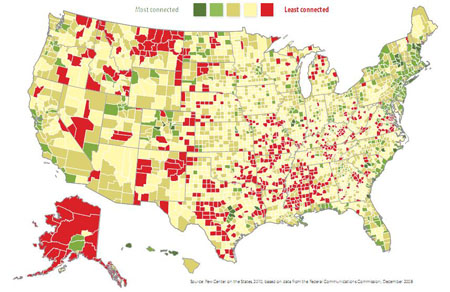In a recent conversation with Adrian Wooster, I was asked if we’re over analyzing the state of broadband connectivity. Are we spending too much time discussing the problem and not enough in solving it? I was thinking about this question again today as I researched some figures on the recently launched national broadband map. An ambitious tool that’s provoked heated discussion as to its effectiveness and how it can be used to move the state of the country’s broadband forward.

Costing around $200 million and ultimately taking over five years to develop, the map represents the first step in providing detailed analysis on the state of the nation’s broadband infrastructure, especially in highlighting underserved communities in rural areas. The sheer breadth of data captured in this map is impressive, especially when compared to what is available in other countries (see earlier post: Mapping the digital divide). Yet as analysts such as Craig Settles have noted, this map is far from complete and represents only a first attempt. There is still a great deal of information regarding the competitive landscape that needs to be documented for this map to truly help consumers and drive policy forward.
Yet at what point do tools such as this move from a point of conversation to becoming an aid for development. In a recent report from the Department of Commerce a number of key figures on the state of the country’s broadband infrastructure were revealed:
- Broadband adoption rates currently stand at 68.2%
- Rural communities have adoption rates of around 60%
- 28% of all Americans do not use the Internet at all
- Around 10% of Americans lack access to even the most basic broadband
Reaction from the industry to the map has so far been muted, with the exception of Verizon, who openly welcomed it. Yet this shouldn’t be surprising as Verizon recently launched a new website called Broadband Matters that is aimed solely at promoting ‘how people across America are using broadband to transform the economy, education, the environment and healthcare.’ It’s great to see service providers starting to develop resources such as this that actively engage with communities to drive broadband developments forward.
Returning to my original question, I wonder if the national broadband map is another expensive conversation point or a genuine tool that can be used to drive the nation’s broadband forward. Do we spend too much time discussing broadband policy and not enough implementing what we already know? I’d be interested in your thoughts on this.
